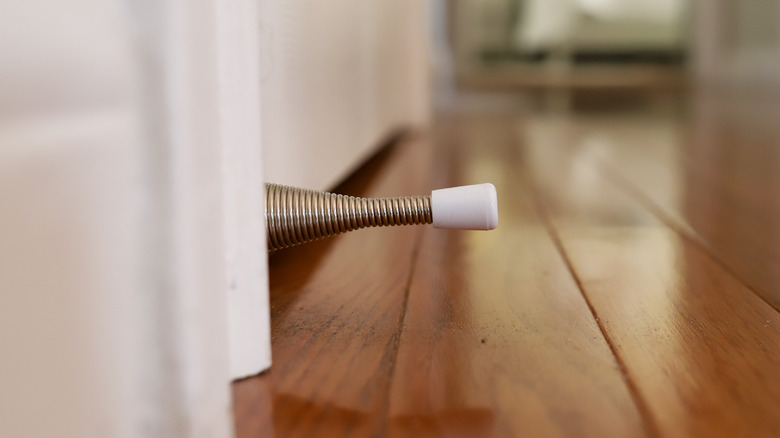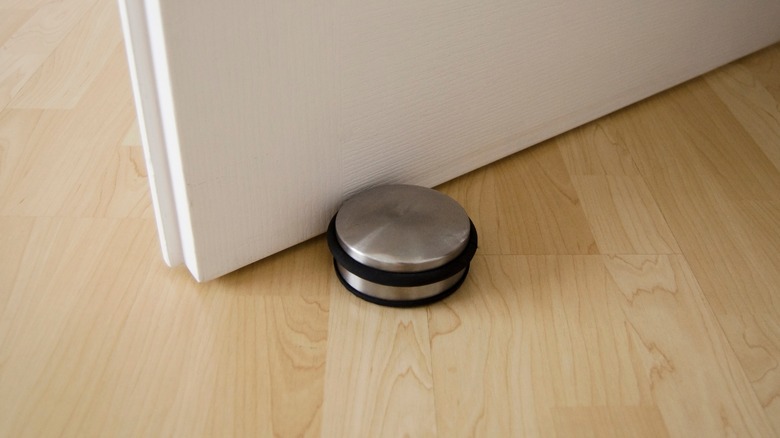The Second Purpose Of A Door Stopper You Likely Didn't Know About
Some of the most mundane items in your home are also the most useful. Door stops, for example, range from the streamlined and discreet to the slightly unsightly but necessary. Yet they fulfill a function most people don't even think about — protecting surfaces like walls or cabinets from bearing the impact of a wildly swinging door. A recent Instagram reel from @jordan_the_ stallion8 has some homeowners gasping in surprise over the dual functionality of most contemporary door stops. Not only can the common coil spring baseboard stop prevent the door from hitting the wall, but it can also hold the door open by looping underneath.
This combination of functions is one of the main benefits of most coil spring baseboard door stops relative to other varieties. The kind of door stopper you choose, however, may depend on the layout of your doors and the surrounding room, as well as the heft and hinges of the door itself.
Door stoppers throughout history
The first dedicated doorstops began appearing in the late 1700s after the invention of new hinges that automatically closed doors. Typically made of iron or other heavy materials, these early doorstops were usually decorative and functional, with many carved in the shape of animals or the busts of famous writers or composers. In 1878, however, a young African American inventor named Osbourn Dorsey patented not only a new doorstop but the design of the protruding round doorknobs we know today. While Dorsey's doorstop was affixed to the back of the door itself, the basic principle of his doorstop caught on. Another patent by Frederick Flam in 1964, specifically outlined a design meant to be affixed low on the wall and made of spring coiling.
Dorsey's invention quickly paved the way for doorstops to be installed in all homes, with a few different variations on location and design. While Flam's baseboard doorstops made of metal coils soon became a standard in many American homes of the late 20th century, you could also find half-circle or circular doorstops attached to the floor, as well as rubber doorstops placed higher on the walls of commercial buildings. Today, many home designs swap out the traditional unsightly baseboard coils for much more stealthy hinge pin doorstops.
Choosing and installing doorstops
Which doorstop is right for your doors is a question that depends on the location and type of doors you are outfitting. Many exterior doors open into the middle of rooms, so often a floor doorstop is the best option to prevent the door from opening too far. If there is a wall behind the door, the baseboard stoppers are typically the most widely available and budget-friendly option, usually costing less than $10 each from most retailers. While hinge pin doorstops are similar in cost, they can be trickier to install.
For best results, install a spring door stop about 1 to 2 inches above the floor and 2 inches from the side edge of the door in line with the doorknob. If it's too low, it will slip beneath the door, while installing it too high can result in a tripping hazard. If you are outfitting a heavier door that gets a lot of force, there are also solid, non-spring versions available, some with magnets that will hold a door open.

